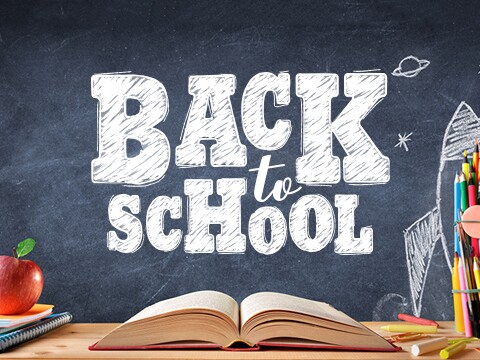A year has gone by since the coronavirus pandemic shut down schools, forcing them to not just change the way students learn but how they get their meals as well.
In March of 2020, schools went from serving lunch in the cafeteria to serving it curbside. Some even used school buses to deliver meals right to the homes of students. But with changes, came some challenges.
Challenges in 2020
In April, ABC15 spoke with parents in the Deer Valley School District who said they were turned away from picking up free meals for their children because supply had run out. That same month, the Mesa School District also cut back on the number of pick-up locations, with officials citing supply issues.
"We had some shortages of products when we all transitioned to curbside," said Shannon Gleave, an at-large director for the School Nutrition Association. "Things that you never really thought about before needing. Bags, paper bags, plastic bags and they were in high demand and so it was kind of hard to get to it."
Gleave says they were eventually able to make it work, creating weekly meetings with nutrition directors to make sure all schools had what they needed.
"Just to keep everyone on the same page, best practices, what's really working, what are some of the struggles we are seeing," Gleave said. "It's really inspiring just to see how hard everyone's working and how outside of the box everyone is thinking just to make sure we are getting our families food."
Transitioning back to in-person
In fact, one year into the pandemic, districts are still charging on, getting meals to remote learners every day. But as schools transition back to in-person, Gleave says it'll take even more adjusting as they figure out how to do both.
“I think even though there’s a small adjustment, I know my staff personally is very passionate about making sure no kid is going hungry," she said.
But the transition hasn't been easy for all districts. Nutrition Director for the Osborn School District Cory Alexander says many of their families do not have transportation to pick up meals curbside, which is why they've been using six vans to deliver roughly 2,000 meals a week to the homes of students.
He says the district does not have the resources to continue meal deliveries once in-person learning returns. He says they've been notifying families that it will stop, but the Governor's back-to-school order is putting an end to it about 10 days sooner than expected.
“We try to get the communication out as soon as we can when there’s a change, any kind of change for our families for them to prepare and this abrupt executive order was a little abrupt," Alexander said. "I’m hoping our families do reach out to us and say, 'You know what, we’re online. We can’t come [to] pick the meals up, how can you help us?' Because that will open up that dialogue.”
The district is currently working to figure out how many students will still rely on that service. The Arizona Department of Education's Director of Implementation for the School Nutrition Program Emily Thege says they are in contact with them and are willing to help.
"Circling back, ensuring community access, reaching out to families and if that truly is the way to receive meals, I'm very open to the possibility of trying to figure out how to still make that work with that access for the remainder of the school year," Thege said.
Resources moving forward
Thege says another way some children with limited transportation who are still learning remotely can receive food assistance is through the Pandemic- Economic Benefit Transfer program, or P-EBT.
The program kicked off last year at the height of the pandemic for a limited time, serving over 600,000 kids. AZED and the Department of Economic Security announced qualifying families will receive funds again starting in April for each month that their child’s school offered distance learning for the 2020-2021 school year.
The recently passed COVID-19 relief bill will also provide more funding for schools. ADE Public Information Officer Morgan Dick said food service is considered an allowable use for that funding and can be used to support districts with continued meal delivery.
Schools are currently operating under the National Summer Food Service Program, allowing anyone 18 and younger to get a meal at no cost and no paperwork. The program was set to expire in June, but the United States Department of Agriculture announced this month that they're extending the program until September 30.
Gleave says after that point, families will need to sign up for the National School Lunch Program to continue getting free or reduced meals, a process that might be new for some.
“We do expect families to need to take advantage of this program," Gleave said. "We will be doing blasts and community outreach a lot just to let families know that these programs are available for them."




